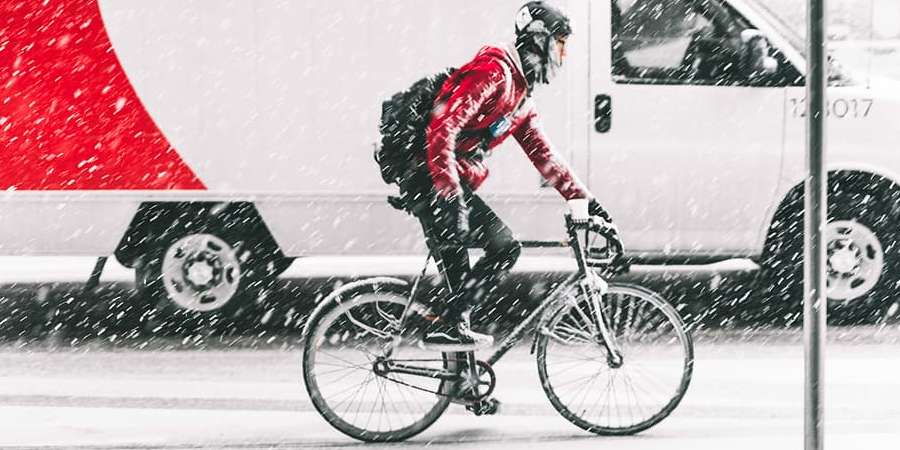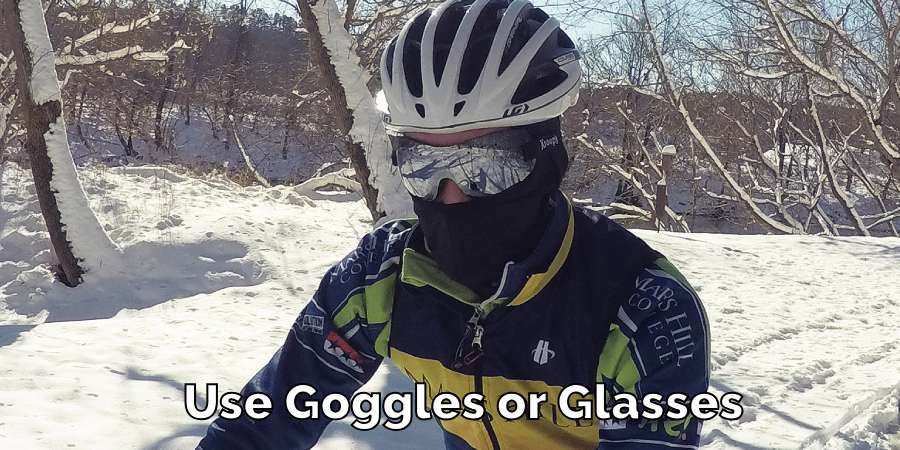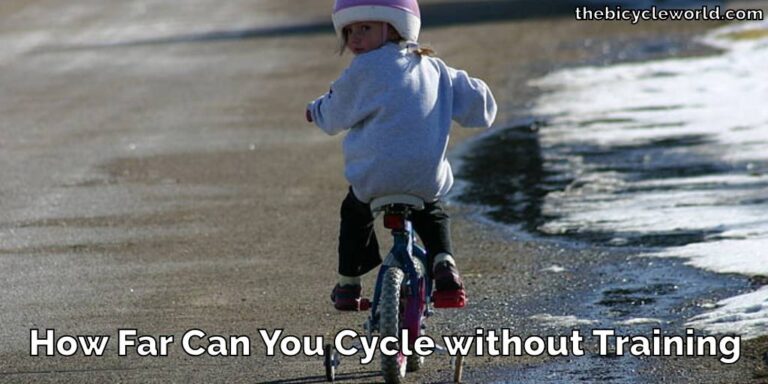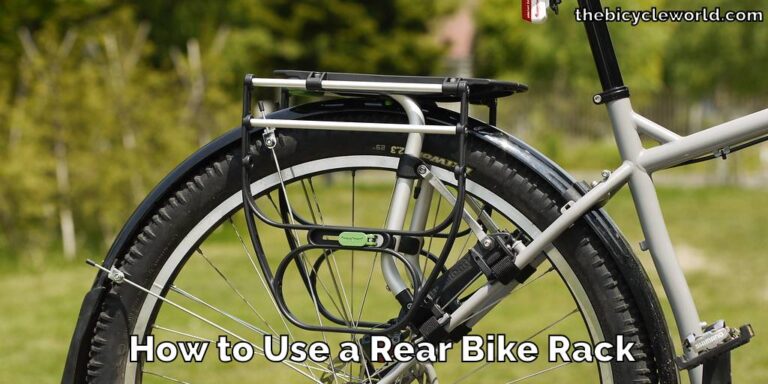How To Keep Your Face Warm When Cycling In Cold Weather
Introduction
Cycling in the chill of winter brings its own set of challenges, most notably keeping your face warm against cold winds and low temperatures. This discomfort can even pose risks if you’re not adequately prepared.

This guide offers practical, straightforward advice on how to keep your face warm when cycling in cold weather.
We’ll cover essential tips on choosing the right gear, understanding the importance of face warmth for safety and comfort, and simple strategies for braving the winter chill. Ideal for both experienced cyclists and newcomers, these insights aim to make your winter rides enjoyable and safe, focusing on enjoying the journey without the distraction of the cold.
Why You Need to Keep Your Face Warm When Cycling in Cold Weather
Keeping your face warm while cycling in cold weather is crucial for comfort and safety. Exposure to cold air can cause numbness, reducing your ability to concentrate and stay alert. This can lead to accidents or mishaps on the road.
Cold air also dries out and irritates your airways, potentially causing respiratory issues. By maintaining facial warmth, you ensure clear vision and easier breathing, both essential for safe cycling. Moreover, protecting your face from cold prevents skin damage, such as dryness and chapping.

In severe cold, it can even prevent frostbite. Keeping your face warm also improves mental focus and physical performance. When your body doesn’t have to work hard to warm your face, it can focus more on cycling, enhancing your efficiency and enjoyment.
Additionally, a warm face helps in maintaining overall body temperature, making your cycling experience more pleasant and less draining in cold weather.
Understanding Cold Weather Challenges
Cycling in cold weather means facing tough elements like chilly winds and freezing temperatures. These conditions can significantly lower the temperature of your skin, increasing the risk of frostbite, especially in very cold environments.
Additionally, cold air lacks moisture, which can lead to your skin becoming dry and uncomfortable, and in some cases, even causing skin damage. Besides the direct impact on your skin, cold weather can also affect your overall physical comfort and cycling performance.
The chill can make muscles stiff and less responsive, making it harder to pedal efficiently or react quickly in traffic. Your body has to work harder to keep warm, which can drain your energy faster than usual, making longer rides more challenging.
Also, the cold can affect your bike’s performance – tires might lose grip, and mechanical parts may become less reliable. By understanding these challenges, cyclists can better prepare for cold-weather rides. It’s not just about comfort it’s about ensuring a safe and effective cycling experience.
Knowing what to expect allows you to dress appropriately, choose the right gear, and make adjustments to your cycling routine that account for the colder conditions.
Materials and Fabrics for Face Warmth
When cycling in cold weather, choosing the right material for face protection is key. The ideal fabric should keep you warm and at the same time allow your skin to breathe. Here are some of the best materials for this purpose:
Fleece
- Soft, lightweight, and comfortable.
- Provides excellent warmth without being too heavy.
- Great for fitting under a helmet.
Neoprene
- Used in water sports for its protective qualities.
- Very good at blocking wind.
- A strong choice for windy weather conditions.
Thermal Fabrics
- Specially made to hold in body heat.
- Balances warmth with the ability to wick away sweat.
- Ideal for staying dry and warm.
Wool Blends
- Naturally helps regulate temperature and manage moisture.
- Comfortable and often non-itchy.
- Combines comfort with effective warmth.
Each of these materials offers unique benefits for facial protection against the cold. Your choice should depend on the specific conditions you expect to face and your personal comfort preferences. The right fabric will help keep you warm and comfortable, enhancing your cycling experience in cold weather.
Types of Face-Warming Gear
When it comes to keeping your face warm while cycling in cold weather, there are several types of gear you can choose from. Each type offers a different level of coverage and warmth, so it’s important to pick one that suits the weather conditions and your comfort. Some popular options include:
Balaclavas
- Cover the entire head and neck, with openings for the eyes and sometimes the mouth.
- Offer comprehensive protection and are ideal for very cold conditions.
Face Masks
- Cover just the lower part of the face and nose.
- Good for moderate cold, allowing more flexibility and breathability.
Neck Gaiters
- Can be pulled up to cover the lower face and ears.
- Versatile and easy to adjust as needed.
Choosing the right type of face-warming gear depends on how cold the weather is and what you find comfortable. Balaclavas offer the most coverage, face masks focus on critical areas, and neck gaiters provide a flexible solution. Whichever you choose, the right gear will keep you warm and make your cold-weather cycling much more enjoyable.
Layering for Maximum Protection
In cold weather cycling, the way you layer your clothing is essential for staying warm and comfortable. Proper layering helps to manage body temperature and protect against cold, wind, and even moisture. Here’s a simple guide to layering effectively:
Moisture-Wicking Base Layer
- This layer sits right against your skin.
- Its main job is to keep sweat away from your body, which helps you stay dry and warm.
Insulating Middle Layer
- This layer helps to trap and retain body heat.
- Materials like fleece or wool are great for this layer, providing warmth without too much bulk.
Wind-Resistant Outer Layer
- The outermost layer shields you from wind and cold air.
- It should be breathable yet able to block the wind, and ideally water-resistant for wet conditions.
The right combination of layers can make a big difference in your comfort and warmth when cycling in cold weather. Start with a base layer that wicks away moisture, add an insulating middle layer for warmth, and finish with a protective outer layer against the wind. This setup not only keeps you warm but also gives you the flexibility to remove layers if you get too warm, ensuring a pleasant cycling experience.
How to Keep Your Face Warm When Cycling in Cold Weather
To enjoy cycling in cold weather, keeping your face warm is essential. Here are some detailed tips on how to do just that:
Choose the Right Gear
Selecting the correct face covering is crucial. A thermal balaclava or a winter-specific face mask is ideal. Ensure that it covers critical areas like your nose, mouth, and ears, providing maximum protection against the cold.

The material should be breathable yet insulating, preventing heat loss while allowing for air circulation.
Apply a Moisturizer
Before you set out, apply a thick, protective moisturizer to your face. This creates a barrier against the harsh, drying effects of cold wind, helping to prevent skin irritation and chapping. Look for moisturizers designed for outdoor activities or cold weather for best results.

Use Goggles or Glasses
Your eyes also need protection from the biting cold and wind. Use cycling-specific goggles or glasses to shield your eyes. This not only protects against the cold but also improves visibility by preventing tears or fogging caused by the wind.

Breathing Techniques
Adopt a nose-breathing technique while cycling. Breathing through your nose naturally warms the air before it reaches your lungs, reducing the shock of cold air and making breathing more comfortable.
Adjust Pace
It’s important to find a balance in your cycling pace. Maintain a moderate speed to avoid sweating too much. Excessive sweating in cold conditions can make you feel colder as the sweat cools on your skin.
Regular Breaks
If you’re going on a long ride, plan for regular breaks. Use these breaks to go indoors and warm up. This helps to prevent prolonged exposure to the cold and gives your body a chance to recover.
Cover Extremities
Besides your face, pay attention to other exposed areas like your hands and feet. Use insulated gloves and socks to keep them warm. Cold hands and feet can greatly affect your overall comfort and cycling performance.
Stay Hydrated
Cold weather can be deceiving in terms of hydration. Drink plenty of fluids as staying hydrated is important for maintaining body heat.
Check Weather Conditions
Before heading out, always check the weather forecast. Being aware of the conditions can help you prepare adequately, especially if there’s a chance of rain or snow.
By following these tips, you can effectively keep your face and body warm during cold weather cycling. Remember, the right gear, a bit of preparation, and understanding your body’s responses to the cold can make a significant difference in your cycling experience.
Tips for Maintaining Visibility and Comfort
When cycling in cold weather, maintaining visibility and comfort is just as important as staying warm. Here are some tips to ensure you stay safe and comfortable:
- Ensure Clear Vision: Choose face gear that doesn’t block your sight. Whether it’s a balaclava, mask, or goggles, make sure it fits well and allows you to see clearly in all directions. This is crucial for spotting any obstacles or traffic and navigating safely.
- Helmet Compatibility: Select gear that fits smoothly under your helmet. It should not be too bulky or shift your helmet out of place. A well-fitting helmet is essential for safety, so try on different combinations of headwear and helmets to find the best match.
- Comfortable Helmet Adjustment: If you’re wearing extra headwear like a balaclava or a thicker cap, adjust your helmet accordingly. It should sit snugly on your head without being too tight or too loose. This ensures comfort and maximizes the helmet’s protective function.
- Visibility Aids: Consider adding reflective strips or using lights on your helmet or gear, especially if you ride in low-light conditions. These aids make you more visible to other road users, increasing your safety.
- Eye Protection: Use cycling glasses or goggles that protect against wind and debris. They should also prevent fogging, which can impair your vision during a ride.
- Professional Advice: Don’t hesitate to seek advice from cycling experts. They can offer personalized recommendations for gear and tips that are suited to your local weather conditions and personal needs. Their experience can guide you in choosing the right equipment for both visibility and comfort.
- Regular Gear Checks: Regularly inspect your gear for any signs of wear or damage. Ensuring your equipment is in good condition can prevent unexpected issues during your ride.
- Face Gear Adjustments: Be prepared to make small adjustments to your face gear during your ride for comfort and improved visibility. Sometimes a slight repositioning can make a big difference.
By following these tips, you can enhance both visibility and comfort while cycling in cold weather. Remember, safety is paramount, and being well-prepared will make your rides more enjoyable and secure.
Professional Advice
For the best experience in cold weather cycling, it’s wise to seek advice from professional cycling experts. These specialists can provide personalized recommendations for gear and clothing, considering your specific needs and the typical weather conditions of your area. Here are some points to consider when consulting with a professional:
- Personalized Gear Selection: An expert can help you choose the right type of clothing and accessories based on your cycling style, the intensity of your rides, and the specific climate you’re dealing with. This might include selecting the most suitable materials for insulation, the best types of face protection for extreme temperatures, or even the most effective moisturizers for skin exposed to cold winds.
- Local Weather Insights: Local cycling experts are familiar with the weather patterns and challenges in your area. They can offer invaluable advice on how to prepare for typical winter conditions, whether it’s dealing with icy roads, freezing winds, or fluctuating temperatures.
- Fit and Comfort Evaluation: An expert can assist in ensuring your winter cycling gear fits well with your existing equipment, like helmets and glasses. They can provide tips on how to adjust your gear for maximum comfort and safety.
- Maintenance Tips: Get advice on how to maintain and care for your winter cycling gear. Proper maintenance can extend the life of your gear and ensure it performs at its best.
- Safety Considerations: Professionals can provide tips on staying safe while cycling in winter, including visibility, road safety, and how to handle your bike in cold and potentially slippery conditions.
By consulting with cycling experts, you can gain insights and tips that are tailored to your needs, enhancing your overall experience and safety when cycling in cold weather.
FAQ’s
How Do I Keep My Head Warm During Winter Cycling?
A thermal hat or a helmet liner is perfect for keeping your head warm under your helmet. These are designed to provide insulation while fitting snugly, so they don’t disrupt the fit of your helmet. Look for materials like fleece or wool that offer warmth without being too bulky.
How Do You Not Get Cold When Cycling?
The key is to dress in layers. Start with a base layer that wicks sweat away from your skin, add an insulating layer like fleece or wool, and top it off with a wind and water-resistant outer layer. Don’t forget to protect your extremities, which lose heat quickly – gloves, warm socks, and shoe covers are essential.
What Should I Wear Cycling in Cold Weather?
Your outfit should consist of layers that can be adjusted based on the temperature and your level of exertion. Begin with a moisture-wicking base layer, followed by an insulating middle layer, and a wind-resistant outer layer. Materials like merino wool and synthetic fibers work well for base and mid-layers, while outer layers should be waterproof and breathable.
Is it OK to Cycle with a Head Cold?
It’s usually better to rest when you have a cold. Cycling, especially in cold weather, can put extra strain on your body and may worsen your symptoms. Resting allows your body to focus on fighting the cold and can lead to a quicker recovery.
Why is Cycling Harder in Winter?
There are a few reasons why cycling can feel more challenging in winter. The colder air is denser, which creates more resistance as you ride. Thicker clothing and layers can restrict movement and add weight, making you work harder. Also, your body expends more energy to keep warm, which can reduce your overall efficiency and performance.
Conclusion
Cycling during the colder months can be a truly rewarding experience when you’re well-prepared. Choosing the right gear to keep your face warm is crucial. Options like thermal balaclavas, fleece-lined face masks, and moisture-wicking neck gaiters provide essential protection against the cold.
Understanding how to layer effectively is also key – start with a base layer that keeps moisture away from your skin, add an insulating middle layer, and finish with a wind-resistant outer layer to shield against the chill.
Remember, the goal is to find a balance between staying warm and ensuring enough breathability to prevent overheating. It’s also important to stay visible in lower light conditions, so consider gear with reflective elements. This article has explored how to keep your face warm when cycling in cold weather.
Regularly consulting with cycling experts can provide valuable insights to your needs and local weather conditions. With these considerations in mind, you can enjoy a comfortable, safe, and enjoyable cycling experience all winter long.






